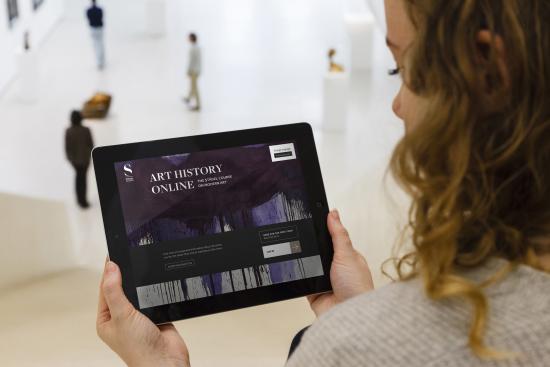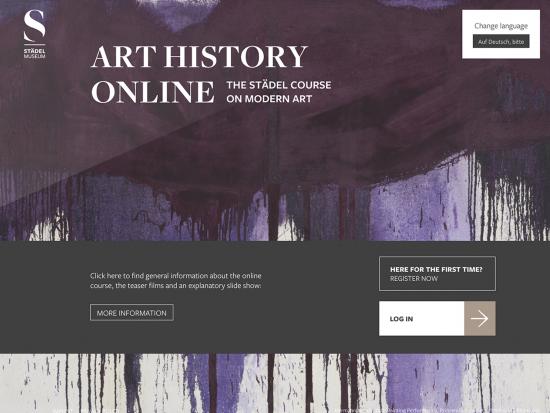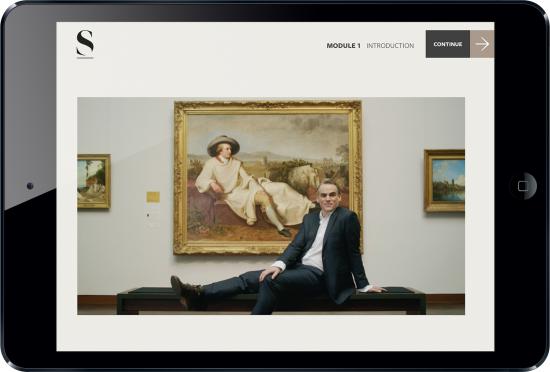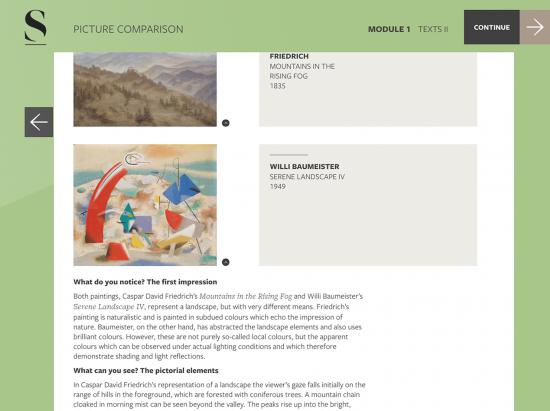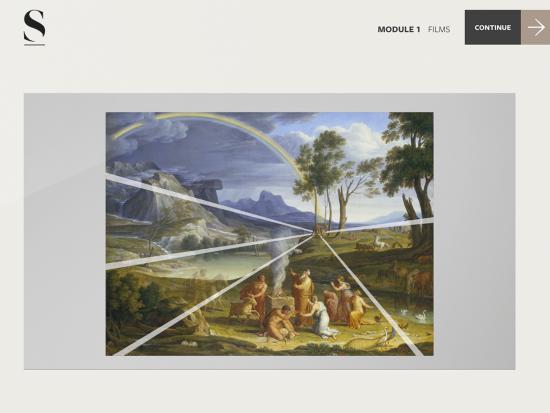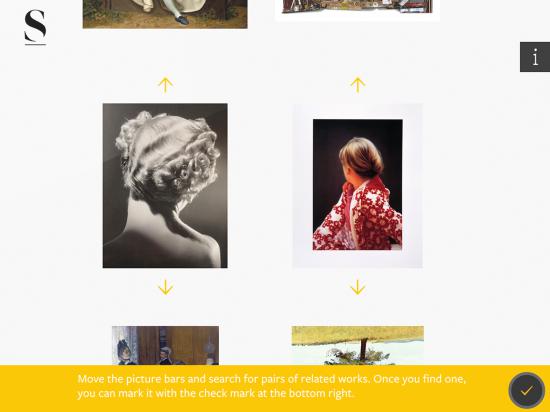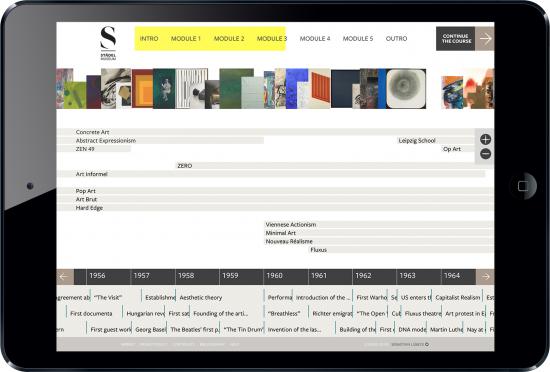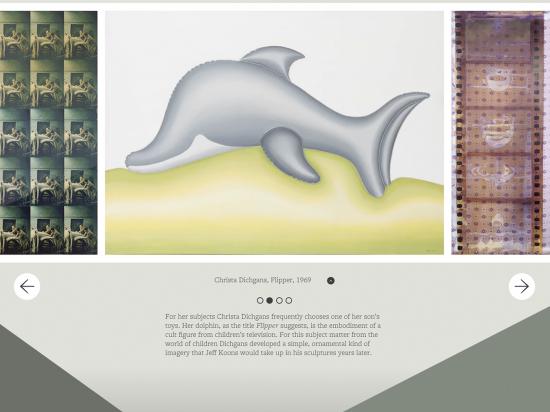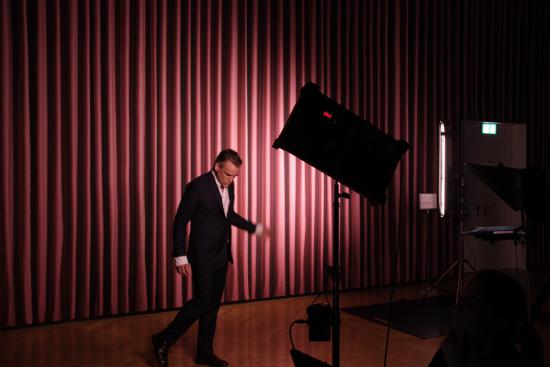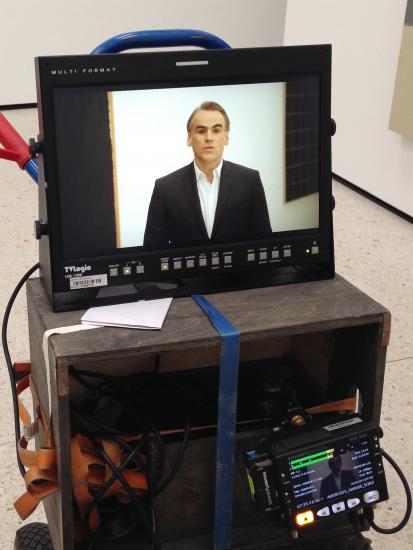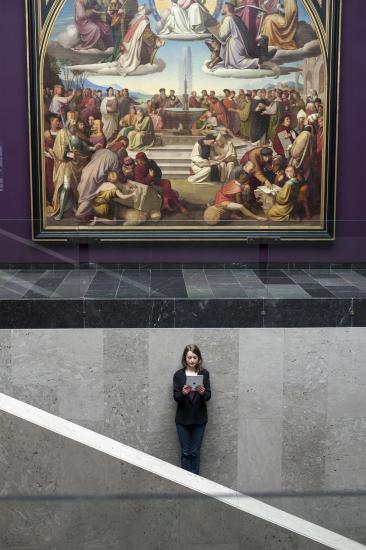The Städel Museum in Frankfurt has developed an innovative educational format that seeks to set a new standard in the realm of online education: “Art History Online – The Städel Course on Modern Art” is a comprehensive, free online course, made up of films, texts, interactive tasks and an additional timeline covering more than two hundred years of art history, from the eighteenth century to the present day. The large-scale project has been realized in cooperation with the Art History Chair and the Centre for Digital Cultures at Leuphana University of Lüneburg. Based on more than 250 works from the Städel Museum’s collection, this online course provides users with an enriching learning experience. In contrast to so-called Massive Open Online Courses (MOOC), “Art History Online” supports flexible self-study in European art history, accompanied by the noted German actor Sebastian Blomberg. The varied multimedia programme addresses a broad, international audience with an interest in art, teaching both a toolset of visual skills and background knowledge to further enrich their encounters with modern art. Along with introductory and explanatory films on various major topics, users will find hands-on learning formats, detailed texts, and a comprehensive timeline of historical events, artists, and key works of modern art. In total the course offers up to forty hours of material which users can delve into at varying depths, depending on their individual interests. Whereas Sebastian Blomberg serves as a guide through the course, the sound was designed by the Berlin musician Boys Noize.
The new digital offer is designed for all who wish to attain a knowledge of art history and iconography in an appealing manner and on their own schedule. It responds to a growing international interest in understanding the history of modern art while at the same time shedding light on historical developments in society at large. Serving as both introduction and follow-up, the online course is as attractive to users who know nothing at all about art history as for those with basic knowledge. It can be used in combination with school and college courses or professional training, or simply as an entertaining and informative look at art history for its own sake. This offer is in keeping with the Städel Museum’s overriding desire to extend its educational efforts far beyond the physical boundaries of the museum and, in an up-to-date and innovative way, inspire various target groups to engage with art and culture.
The online course was sponsored by the Städelscher Museums-Verein e.V.
Course method and structure
The Städel Museum’s online course provides a varied learning environment for guided self-study. In doing so, it makes use of the possibilities offered by the digital realm, for example a range of textual links in different mediums. Based on roughly 250 works selected from the Städel’s own collection, the programme effectively combines films, texts, a comprehensive timeline and interactive tasks in which users can put their newly acquired knowledge to the test. Questions and problems that introduce multiple perspectives on specific works and subject matter guide the users’ approach to art. Instead of presenting art-historical facts in a dry, chronological sequence, the Städel Museum’s online course reveals relationships between artists and works, even those of very different epochs. It teaches how to understand the visible iconography and how to discover hidden meanings. Users develop a sense of the different contexts in which works are created, they see how and why artists and artists’ groups come together and make reference to each other, and how different institutions deal with art. The programme ultimately enables those who complete it to appreciate art more independently and critically.
The course is divided into five modules. Instead of following a chronological order, these modules focus on important topics, each building on the last:
- Module 1 – Learning to see: analysis of pictorial forms and motifs
- Module 2 – Discovering what is hidden: the different contexts in which artworks are created
- Module 3 – Exploring positions: artistic programmes and classification systems
- Module 4 – Finding connections: correspondences between artists and their works
- Module 5 – Collecting and presenting: the museum and its role in the world of art
A roughly five-minute film at the beginning of each module introduces its main theme. These films are entertainingly moderated by the stage and screen actor Sebastian Blomberg. Along with detailed texts, each building on the one before, films on individual works and topics provide relevant art-historical and iconographic information on which the user can draw while working on the tasks. The timeline, with information about works, artists, styles and schools as well as historical and cultural contexts, can be consulted at any time. Each module ends with a wrap-up review of its major focus. Users can progress through the five modules at their own pace, stopping to explore a topic in greater detail or moving on to the next. An in-depth study of the course takes around forty hours.
Signing up
Interested parties need only register at the website onlinecourse.staedelmuseum.de – and can then start the course immediately. It is offered at no cost, and can be used on computers and tablets. It is optimized for modern browsers.
Art education in digital space
“Art History Online – The Städel Course on Modern Art” was sponsored by the Städelscher Museums-Verein, a society of friends of the museum established in 1899. In addition to facilitating new acquisitions and ensuring the growth of the museum’s collection, this association is strongly involved in the promotion of scholarly work and educational projects like the present one. The realization of the Städel’s first online course has been a joint effort of the society and the museum. Given the increasing digitalization of everyday life, it is crucial for cultural institutions to expand their educational mandate to include the digital realm and provide free programmes offering all potential users new access to art and culture. When the Frankfurt museum celebrated its two-hundred-year jubilee in 2015, it pledged to pursue a course of “digital extension.” This online course in modern art is a first demonstration of how up-to-the-minute, innovative, and – best of all – entertaining digital education in the field of art can be.
Art History Online –
The Städel Course on Modern Art
URL: http://onlinecourse.staedelmuseum.de
Launch: 16 November 2016
Technical requirements: The course can be used on computers and tablets and is optimized for modern browsers.
A production of the Städel Museum in collaboration with the Art History Chair and the Centre for Digital Cultures at Leuphana University of Lüneburg
Overall concept: Dr. Chantal Eschenfelder (Director of Education, Städel Museum), Prof. Beate Söntgen (Professor of Art History, Leuphana University of Lüneburg), Herbert Schwarze (dramatic advisor, Berlin)
Technical concept, design and realization: agenturfuerkrankemedien GmbH, Berlin
Sponsor: Städelscher Museums-Verein e.V.
Additional support from: maze pictures GmbH, Munich & Berlin

 11.12.2025: Beckmann | Jetzt im STÄDEL
11.12.2025: Beckmann | Jetzt im STÄDEL
 10.12.2025: Gastkommentar: Kunst und Bakterien
10.12.2025: Gastkommentar: Kunst und Bakterien
 29.10.2025: Lasst uns reden – Städel Gespräche | Museum – ein Ort für Demokratie?
29.10.2025: Lasst uns reden – Städel Gespräche | Museum – ein Ort für Demokratie?
 10.10.2025: Carl Schuch und Frankreich | Jetzt im STÄDEL
10.10.2025: Carl Schuch und Frankreich | Jetzt im STÄDEL
 19.09.2025: Lasst uns reden – Städel Gespräche | Die Macht der Bilder
19.09.2025: Lasst uns reden – Städel Gespräche | Die Macht der Bilder
 18.09.2025: Art meets science! 🖼️🌊
18.09.2025: Art meets science! 🖼️🌊
 16.09.2025: Was bewegt Asta Gröting?
16.09.2025: Was bewegt Asta Gröting?
 28.07.2025: Gastkommentar: Kunst und Meeresforschung
28.07.2025: Gastkommentar: Kunst und Meeresforschung
 23.07.2025: How does an exhibition come together?
23.07.2025: How does an exhibition come together?
 17.07.2025: Annegret Soltau's photo stitchings
17.07.2025: Annegret Soltau's photo stitchings

